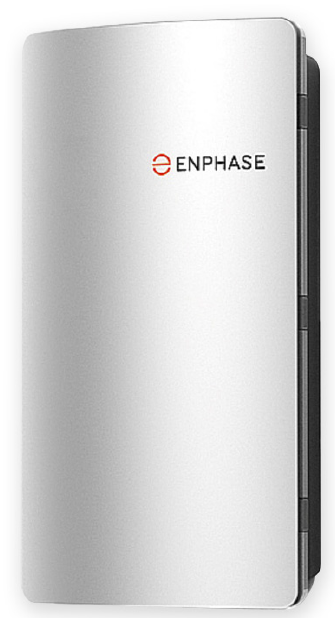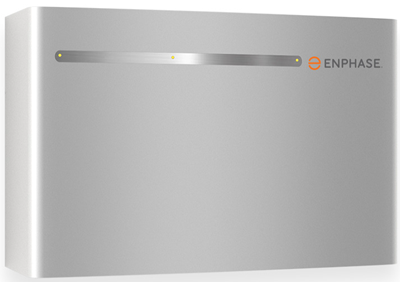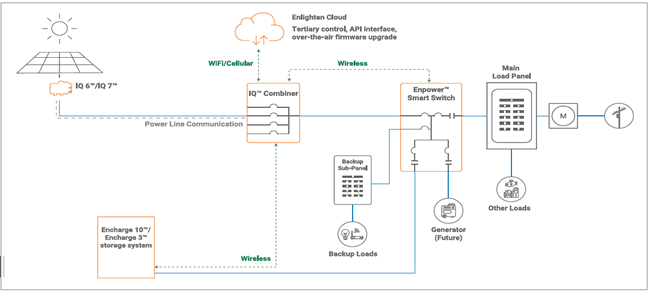Welcome to the
Run on Sun Monthly Newsletter

In this Issue: |
November, 2019
Volume: 10 Issue: 11
Win Some, Lose Some…And sad to say, we lost this one! (The election to be on the Board of the California Solar and Storage Association, that is!) But I am honored by the support of so many of you, and you can count on me to continue to be a vocal advocate for this industry -- and for doing things the right way. In the meantime, here is the list of the winners this year: Contractor Seats Manufacturer, Distributor, Developer, Financier Seats Congratulations to them all - here's to a very productive term of office. |
“Congrats to the Winners!”
Help Us Spread the News!


Let's Talk Ensemble!The Enphase Ensemble system is almost here, with the company opening their Homeowner Pre-Order site this past week! So let's start talking about how this is going to work for existing and potential clients. What is Ensemble?Ensemble is the name of the new Enphase storage and control system. It consists of the Enpower smart switch, some amount of Encharge battery systems (depending on your needs), and an IQ Envoy to handle communications. The system is capable of supporting "whole home" backup, although for most clients a "partial home" system will make more sense.
The Enpower smart switch contains an automatic transfer switch - or a Microgrid Interconnect Device, to use the language of the NEC (to isolate from the grid when there is a grid failure) - rated at 200 amps, and a neutral forming transformer to allow for 120/240 VAC operation. The Encharge batteries come in two sizes: a 3.3 kWh battery and a 10 kWh battery (which is actually three of the 3.3 kWh batteries mounted behind a common cover). Inside the 3.3 kWh unit are four IQ8 microinverters, and thus 12 as part of the 10 kWh unit. The 10 kWh unit, which is going to be the minimum size that you will want, has a continuous output power of 3.84 kW, with a peak out of 5.7 kW for ten seconds - enough to allow for inrush current from motors, for example. Both units have a NEMA 3R rating so they can be installed outdoors (though you will want them out of direct sunlight if possible), and come with a 10-year warranty. How Will it Fit with My Existing System?First, you need to have IQ microinverters. At least as of the initial rollout of this system, the older microinverters are not supported. That means that the M and S-series of microinverters have to be replaced to IQ-series microinverters to work with Ensemble. (I do not know if this will change in the future, but it is the guidance that we are getting at this time.) It is possible that there will be some sort of replacement program (like Enphase did with the legacy M-190 customers), but I have not gotten any word about such a plan yet. Second, you need a rough parity between the output power of the solar array and the output power of the Encharge batteries. That means that if you have a single, 10 kWh Encharge battery system, the rated output power of the installed microinverters on the roof, has to be at or below 5.7 kW. Here's what that means for the IQ microinverters that have been installed in the past three years:
As the systems that we have been installing have all been IQ6+ or IQ7+, you can see that with a 10 kWh Encharge system, you are limited to 19 panels - a 6.365 kW system when paired with LG 335's. How can I Plan to Make Ensemble Work Best for Me?Making this work requires some planning and modifications, and not every existing system will be a good candidate for this. As we have noted in earlier posts about Ensemble, most folks in Southern California have what is called a combination service panel where the meter unit and the distribution unit (where the breakers are) are in the same, physical device. Without replacing the service panel, you are left with a configuration that will looks something like this:
That is your PV system in the top left powered by IQ microinverters. Those land on an IQ Combiner (which Run on Sun has been using since the IQ microinverters were rolled out). On the far right is the grid, feeding your meter and the service panel. (In an existing system, the output from the IQ Combiner goes to a disconnect switch and then to a breaker (or a lug) in the service panel.) To add Ensemble, you need to connect the Enpower switch to the service panel via an appropriately sized breaker. You also need to create an emergency load subpanel, with the critical loads that you want to operate during an emergency. (This takes a good deal of thought - you will need to know the power requirements of the devices you are looking to operate during the outage and size the system accordingly.) Everything then flows through the Enpower switch (including the possibility of a backup generator, though that will not be immediately supported). We do not yet know what the utilities or local AHJs will say about this. Presumably the utilities still want a lockable disconnect switch on the output from the Combiner, but will they also want one on the output of the Encharge battery system? The Encharge system allows for two, 10 kWh units to be "daisy-chained" together; for larger storage system a storage subpanel is required. Also required is consumption monitoring, which may not be possible on some service panels (due to space constraints) without rewiring the entire panel - ugh. So... this is going to be a great product, but it is neither a cheap nor simple process. Interested? Let's get started! |
We applaud DWP for being open to making systems easier to install, but we just can't get that excited over this victory. Frankly, let's get LA County to give up its fetish over all things bonding and that we would celebrate! Heck, we would throw a parade! |




